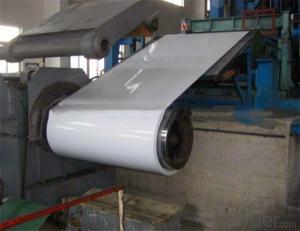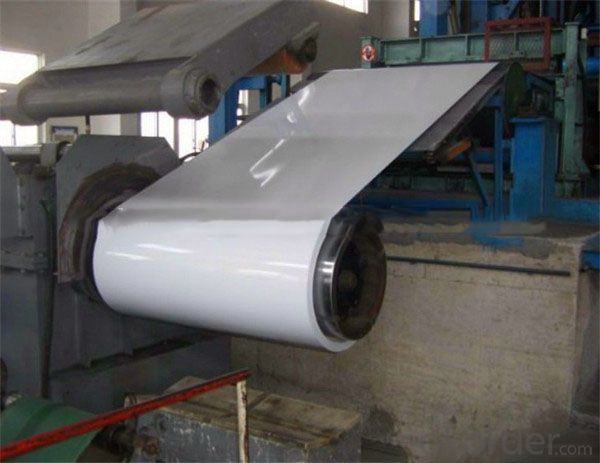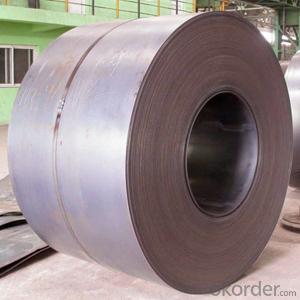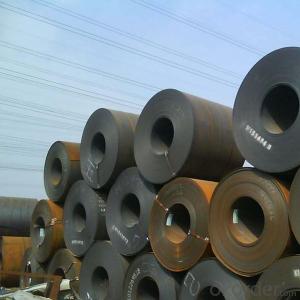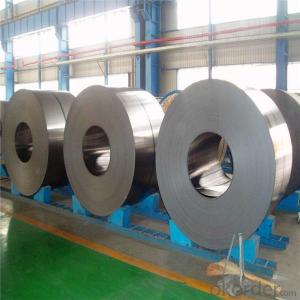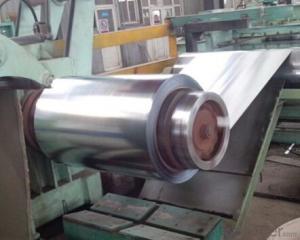Hot Dipped Galvanized Steel Coil 2015 Hot Sale
- Loading Port:
- Qingdao
- Payment Terms:
- TT or LC
- Min Order Qty:
- 2000 PCS
- Supply Capability:
- 30000 PCS/month
OKorder Service Pledge
OKorder Financial Service
You Might Also Like
OKorder is offering high quality Hot Dip Galvanized Steel Coil at great prices with worldwide shipping. Our supplier is a world-class manufacturer of galvanized steel, with our products utilized the world over. OKorder annually supplies products to European, North American and Asian markets. We provide quotations within 24 hours of receiving an inquiry and guarantee competitive prices.
Product Applications:
Hot Dip Galvanized Steel Coil is ideal for fabricating and manufacturing applications.
Product Advantages:
OKorder's Galvanized Steel Coil is durable, boasts high stiffness and load-bearing qualities, and is recyclable.
Main Product Features:
· Premium quality
· Prompt delivery & seaworthy packing (30 days after receiving deposit)
· Corrosion resistance
· Can be recycled and reused
· Mill test certification
· Professional Service
· Competitive pricing
Product Specifications:
Standard | GB/T 12754, JIS G 3302, ASTM A653M, Q/CHG 2-2003 |
Grade | Q195,Q235,Q345,SPHC,SPCC,SPCD,DC01,DC02 |
Thickness | 0.09mm-3.0mm |
Width | 15mm-630mm |
Coil ID | 508mm/610mm or per customer's request |
Surface treatment | Bright or Black Annealing |
Payment terms | T/T,L/C,D/P |
Delivery time | Within 20 days after confirming the order |
Steel Strips Packing | Strapped with min three strapping strips, covered by anti-water paper and plastic film, fixed on the iron or wooden pallets by strapping strips and |
Usage of Steel Strip | Automotive, machinery, appliance, printing, construction, building materials, bicycles and other industries, and production of organic coated steel is also the best selection. |
FAQ:
Q1: Why buy Materials & Equipment from OKorder.com?
A1: All products offered byOKorder.com are carefully selected from China's most reliable manufacturing enterprises. Through its ISO certifications, OKorder.com adheres to the highest standards and a commitment to supply chain safety and customer satisfaction.
Q2: How do we guarantee the quality of our products?
A2: We have established an advanced quality management system which conducts strict quality tests at every step, from raw materials to the final product. At the same time, we provide extensive follow-up service assurances as required.
Q3: How soon can we receive the product after purchase?
A3: Within three days of placing an order, we will begin production. The specific shipping date is dependent upon international and government factors, but is typically 7 to 10 workdays.
Q4: What makes stainless steel stainless?
A4: Stainless steel must contain at least 10.5 % chromium. It is this element that reacts with the oxygen in the air to form a complex chrome-oxide surface layer that is invisible but strong enough to prevent further oxygen from "staining" (rusting) the surface. Higher levels of chromium and the addition of other alloying elements such as nickel and molybdenum enhance this surface layer and improve the corrosion resistance of the stainless material.
Q5: Can stainless steel rust?
A5: Stainless does not "rust" as you think of regular steel rusting with a red oxide on the surface that flakes off. If you see red rust it is probably due to some iron particles that have contaminated the surface of the stainless steel and it is these iron particles that are rusting. Look at the source of the rusting and see if you can remove it from the surface.
Q6: What is the difference between galvanized steel and Galvalume steel?
A6: Galvanized steel is metallic coated with Zinc in various coating weights. Minimum recommended for painted metal roofs is G90. Galvalume is a zinc and aluminum coated steel that becomes an alloy and is recommended in either painted or bare applications with a minimum coating weight of AZ50. Galvalume has an excellent performance life in bare exposures. Hence if you are using a bare panel use Galvalume and if painted use either.
Images:
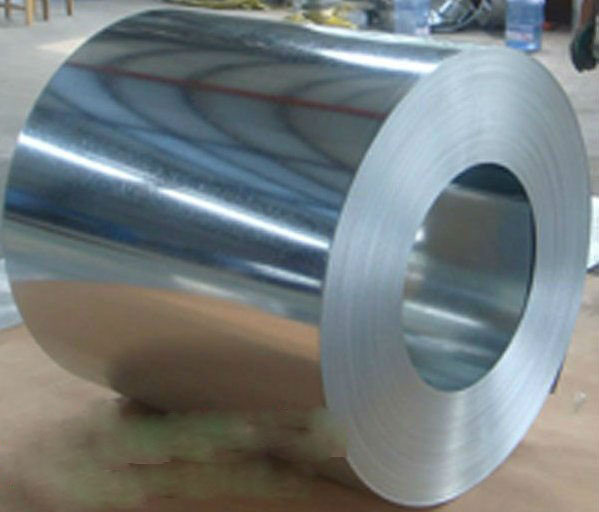
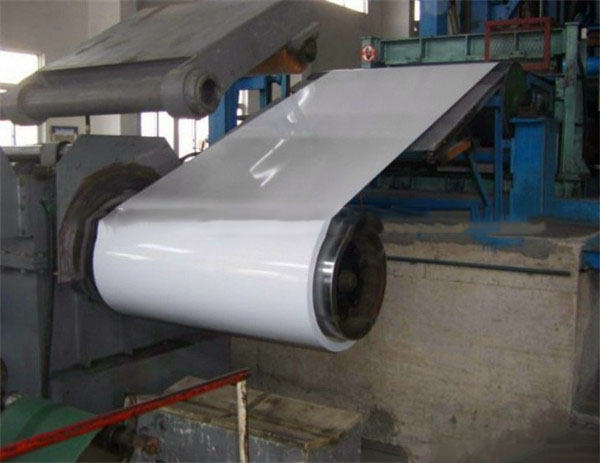
- Q: Is it possible to have a 25 room Hotel building with Steel structure. Thay is instead of traditional RCC can we have a 25 room hotel constructed using steel construction? Is it economic and how much time will it take to construct the same? Appraximate area would be 5000sq.ft to 10000sqft.
- Yes you can have a steel structure building, as if it is more economical than RCC, I think it is , and it is much faster in completion than RCC, For such area steel structure is less in time than the RCC by 30% to 40%, my experience could estimate 6months to 8 months duration for steel structure
- Q: 1045 surgical steel.
- There are many ways to sharpen knives. I guess your question is whether to use the steel that comes with knives, or a stone. Steels are only to straighten the edge, which is stropping. They won't sharpen a truly dull knife. For that you need a real sharpening system, of which a whet stone is one. The edge of a knife will get wavy with use - that's what the steel is for, to true it back up.
- Q: I'm buying a new set of steel plugs.I've heard things about streched ears and cold weather not being to good. do you think it would be bad to be wearing steal plugs?
- It depends on the person. Sometimes cold weather makes stretched ears feel tight, like tighter against plugs. I never felt this, and my friends never have either(at least they say they haven't). Go ahead and wear them, but if you feel any discomfort, just change them out.
- Q: Can steel coils be coated with fluorescent materials?
- Yes, steel coils can be coated with fluorescent materials.
- Q: If steel can rust with saltwater... then why are ships made of steel? can't we just use other metals like aluminium etc?
- Steel became the medium of construction almost be accident. The Royal Navy began to coat its wooden ships with a coating of steel to give them added protection in battle. They were known as the Iron Clads. From this it was a small step by such people as Brunnel to start construction in iron, then various other steels. The Great Eastern is a classic example. Over the last one hundred years the main improvement is in welding rather than a riveted construction. Improvements in steel have lead to a reduction in the scantlings and through this a reduction I the weight of the ship which has allowed for an increase in the carrying capacity. There always have been specialist ships built with alternative materials. Aluminium, wood, concrete and GRP. GRP. Also it must be remembered that there has been great advances in steel, from the early days of cast iron.
- Q: More specifically steel wire (around 1/8 diameter). I'm doing a science fair project where I'm testing if concrete encased in steel has more fire resistance than steel by itself. However, I have no idea what the dimensions of concrete encased steel is so I can't scale down. And if I did have the dimensions I wouldn't know how to encase it around the steel wire (do I just poor concrete over it (heck I've never even used concrete)? Thanks for any help.
- OK, here is my take on it Take equal lengths of steel wire, one is going to bare, one is going to be encased You will need a tension rig, simply this will be one fixed end and one end you can hang a weight down. For the test you will affix one end and string it between to supports with one end hanging off, which is where you will put the weight. The put a ruler where the weight is, so as the weight pulls the wire down (after it is hot) you can time the stretching. lastly you need a place to put a controlled fire under the wire, I'd reccommend something tame like a camping stove OK, got a test rig and two pieces and a way to test. You'll have to play with different fires and weights to see what works best Putting the concrete on the wire is a tricky one since you don't want the concrete to take the load. Get a tub or dish of approriate size and put some wet concrete in it, partway up. Take one of the wires and coat it with wax or something like it that is soft. Place the wire, with the ends sticking out, in the concrete tub and pour more on to cover it. Let this whole thing harden. You might want to have a specific shape to the tub so it comes out a certain size Now, you have an uncoated wire and an coated one. Be careful you don't pull the wire out of the concrete Another way to do this would be to use joing compound, which is a type of mortor (cement). You can buy it a home depot or such. Mix it up as thick as possible and just cake it on the wire and let harden. You can shape the coating using saran wrap or something maybe. I my world we call this stuff monster mud, its used to shape things for Halloween props like robes into figures. Its quite sturdy when done When you are ready to test just hook each part up with the same fire and weight and take readings of stretch vs. time
- Q: I bought my Gerber Scout for 29 bucks at the local Walmart a couple months ago, and so far it's performed better than any of my previous knives (a couple of low quality Bucks, and a Winchester). However, my friend just bought a 50 dollar Buck knife and I absolutely love it, so I'm debating trading mine in and pitching in a bit of cash for the same kind.What troubles me is the fact that everybody seems to be bashing 440A steel. I hear a lot of bad things about it; how it is soft, chips easy, dull quickly, etc. How bad is 440A steel really, and would it be worth trading in my Gerber plus about 30 cash for a Buck Vantage Pro? Apparently the Vantage Pro uses S30V steel, so is it really that big of an upgrade, from 440A to S30V? Thank you.
- 440 steel is fine for most knives, but there are better quality steels out there for specialized uses. If you like the knife you have, don't worry about what other people say. If you like the new knife more, trade for it. Sometimes I question why people have to ask so many questions about what's better than what.
- Q: What are the common methods of handling steel coils during production?
- There are several common methods for handling steel coils during production. These methods are designed to ensure the safe movement and storage of the coils, as well as to facilitate efficient processing. 1. Forklifts: Forklifts are commonly used to move steel coils within a production facility. They are equipped with specialized attachments, such as coil rams or coil hooks, that securely grip the coil and allow for easy transport. Forklifts are ideal for moving coils over short distances or between different areas of the production floor. 2. Overhead cranes: Overhead cranes are another popular method for handling steel coils. These cranes are typically mounted on rails and can span the entire length of a production facility. They use lifting devices, such as C-hooks or magnets, to securely lift and transport the coils. Overhead cranes are particularly useful for moving large or heavy coils over longer distances. 3. Coil cars: Coil cars are specialized rail-mounted vehicles that are designed to transport steel coils within a production facility or between different areas of a steel mill. These cars feature adjustable arms or forks that can be positioned to securely hold the coils. Coil cars are often used when large quantities of coils need to be moved at once. 4. Coil racks: Coil racks are used for storing steel coils in a vertical position. These racks are typically made of heavy-duty steel and are designed to hold multiple coils securely. They are commonly used in warehouses or storage yards to maximize space and facilitate easy access to the coils. 5. Coil trailers: Coil trailers are specially designed trailers that are used for transporting steel coils over long distances. These trailers have built-in coil cradles or bunks that securely hold the coils during transit. They often feature adjustable or removable coil racks to accommodate different sizes or configurations of coils. Overall, the common methods of handling steel coils during production involve the use of specialized equipment such as forklifts, overhead cranes, coil cars, coil racks, and coil trailers. These methods prioritize the safety of the workers and the integrity of the coils, while also ensuring efficient movement and storage throughout the production process.
- Q: I'm searching for the elastic modulus of ASTM A653 galvanized steel sheet. Max points for first person with a response that includes web address of reliable reference - I just haven't found it yet. thanks!
- Aluminum is non ferrous so a magnet won't persist with it, and this is softer than steel. once you have desperate that, if it has previous paint on it, this is particularly helpful to apply a primer that corresponds to the paint you would be utilising the two vinyl or oil based, then paint. this is possibly no longer Galvanized, yet whilst this is, the unpainted floor with have a 2 colour steel Spackle look.
- Q: What are the different types of steel coil packaging methods?
- There are several types of steel coil packaging methods, including shrink wrapping, strapping, wooden crates, and steel or plastic bands.
Send your message to us
Hot Dipped Galvanized Steel Coil 2015 Hot Sale
- Loading Port:
- Qingdao
- Payment Terms:
- TT or LC
- Min Order Qty:
- 2000 PCS
- Supply Capability:
- 30000 PCS/month
OKorder Service Pledge
OKorder Financial Service
Similar products
Hot products
Hot Searches
Related keywords
